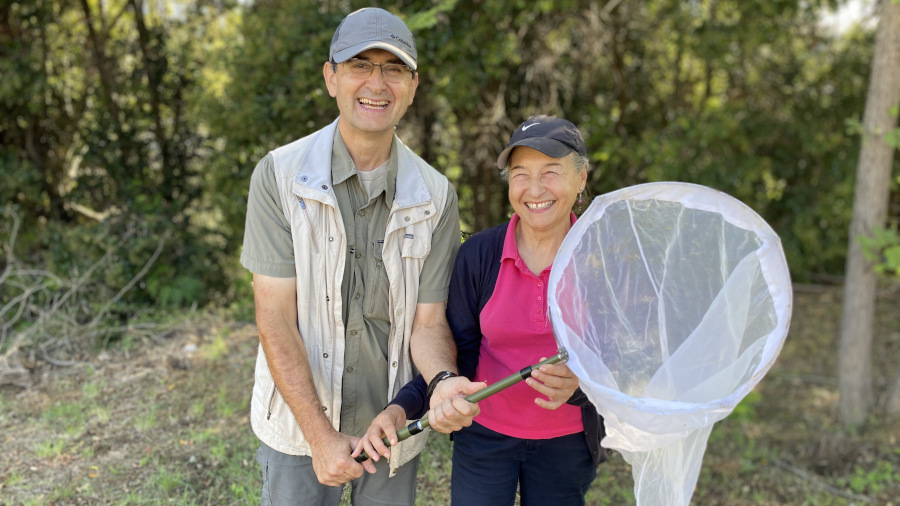Evolutionary response to global warming of the Drosophila subobscura fly accelerates at unprecedented rates
Researchers from the UAB have observed that the rise in temperatures and episodes of heat waves in the past two decades has accelerated the presence of genetic variations that increase tolerance to high temperatures in populations of flies commonly found in European forests, the Drosophila subobscura. The evolutionary response was generated through an increase in the relative frequency of genetic variations already existing in individuals of the species, and not new variations. This therefore implies a rate of global warming which may have put at risk species with lower levels of genetic variation.

The rate of global warming could exhaust the capacity of evolutionary adaptation of many species
Conducting research into evolutionary responses to global warming is an ardous task. There are few studies and those existing date back to the end of the past century, and already pointed to the existence of these responses. In order to update the monitoring of these evolutionary responses within a context of increased global warming, researchers from the UAB Department of Genetics and Microbiology Francisco Rodríguez-Trelles Astruga and Rosa Tarrío Fernández studied the genetic variations of the Drosophila subobscura fly, much smaller than the domestic fly and commonly found in many European forests.
In this species, climate adaptation is mediated by a type of genetic variation known as a chromosomal inversion polymorphism. Certain inversions, a type of mutation that changes to orientation of genome segments, provide the individual with a higher tolerance to cold temperatures, while others provide more tolerance to heat. The results obtained by the UAB researchers, published in Nature Climate Change, confirm those obtained in previous studies, which indicated that the proportion of inversions favouring heat tolerance increased and those favouring cold tolerance diminished. The study shows, for the first time, how this pattern has accelerated at unprecedented speed in the past two decades in temperate Europe versus the Mediterranean, following the impact of longer and more intense heat waves.
“The study began in 2015 and included hard work both in the field and laboratory. We spent four years capturing samples of Drosophila subobscura in 12 localities in Europe at different latitudes. Local inhabitants explained their experiences of witnessing heat waves they had never seen before. Later, we characterised each of the samples genetically in our laboratory at the UAB”, explains Francisco Rodríguez-Trelles. The researchers gathered samples in Vienna, Austria; Leuven, Belgium; Lagrasse, Montpellier and Villars, France; Tübingen, Germany; Groningen, the Netherlands; Leuk, Switzerland; Malaga, Punta Umbria, Riba-roja de Túria and Queralbs, Spain.
The projections indicate that, if a greater effort is not put into mitigating global warming, the central European populations of this species will become genetically indistinguishable from populations in southern Europe by 2050. According to Professor Francisco Rodríguez-Telles, coordinator of the PhD programme in Genetics at the UAB, “this is unheard of, since it is a model species appearing in textbooks as an example of how genetic variability aids in adapting to climates existing in different latitudes”. Researchers did not detect any new inversions in the Drosophila subobscura samples except for those already existing, which leads them to conclude that the pace at which new inversions appear is too slow to make up for the increase in temperatures. This perpective is especially concerning in light of the increased number of insect species that are less able than Drosophila subobscura to adapt evolutionarily to global warming.
Plasticity and evolution, adaptation mechanisms in the face of rising temperatures
Human-caused global warming continues to worsen and the adverse consequences are accumulating as predicted by science. There are two main ways that organisms adjust to temperature increases: plasticity and evolution. While the first works at the individual level, the second works at the population and species level. Examples of plasticity are physiological acclimation in situ or relocating to a place with a more tolerable temperature.
When an increase in temperature exceeds the capacity of some individuals to adapt and there are no thermal shelters, the survival of the species depends on the genetically more thermotolerant individuals. This is when evolution is triggered, which is the response mechanism analysed in this study.
“The observation of evolutionary responses to global warming is both good and bad news”, explains Rodríguez-Trelles. “Good, because it means that there are genetic variations to help tolerate thermal stress. Bad, because it means the death of the unfortunate whose thermotolerant genetic variations are insufficient. Plus, if global warming evolves too fast and lasts too long, even those with higher thermotolerance may succumb, leading to the extinction of the species”, he concludes.
Research paper:
Francisco Rodríguez-Trelles & Rosa Tarrío, Drosophila subobscura evolutionary response a global warming in Europe, Nature Climate Change. 13 September 2024. DOI: 10.1038/s41558-024-02128-6. https://www.nature.com/articles/s41558-024-02128-6
The UAB, with Sustainable Development Goals
Life on land